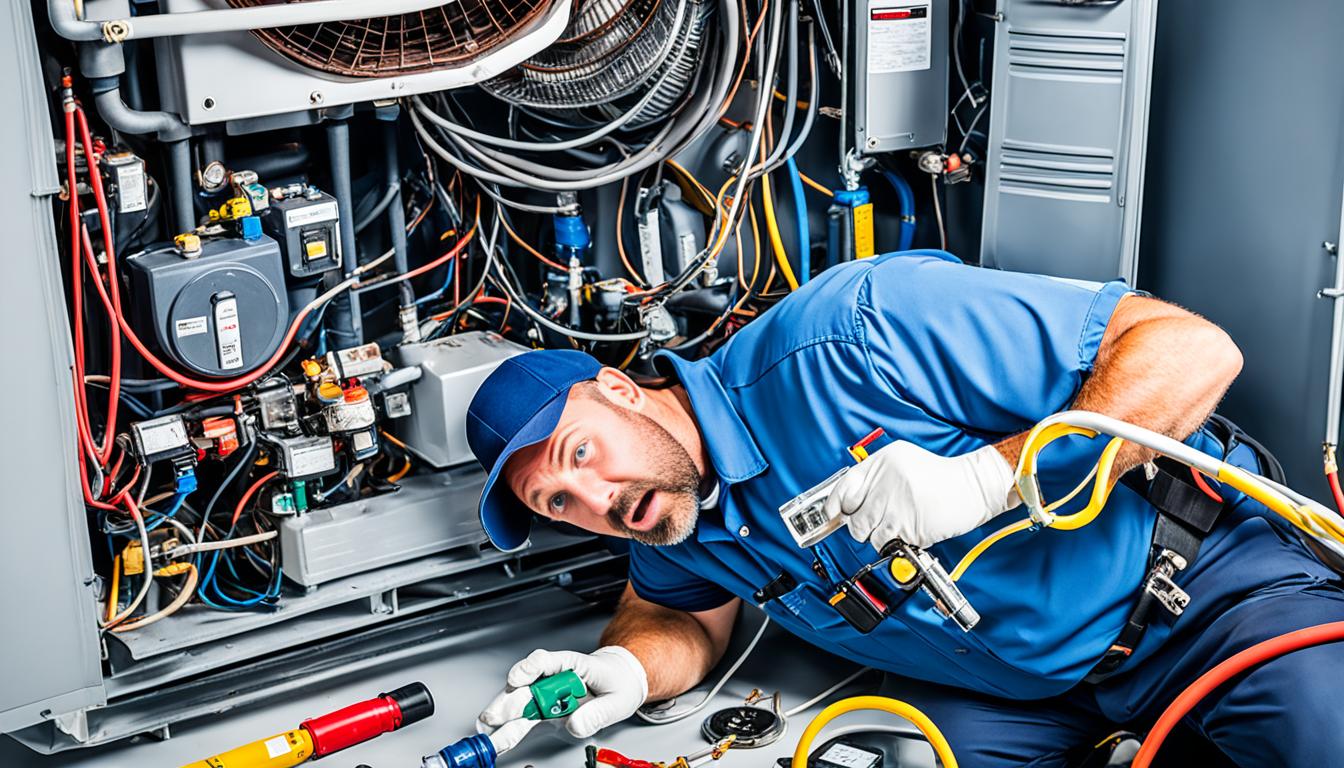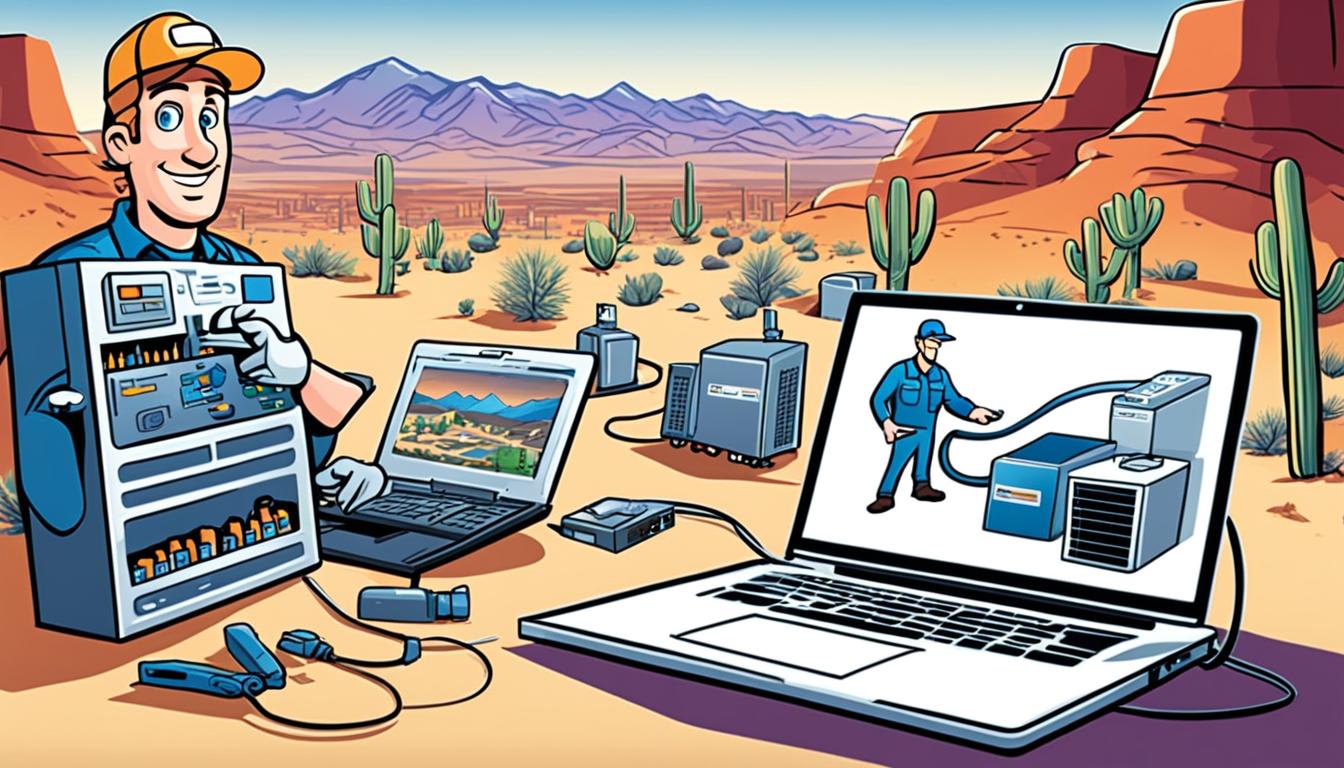As an AC repair contractor, you know the frustration of dealing with refrigerant leaks. It’s a common issue that can cause system inefficiency, increased energy consumption, and even environmental harm. You strive to provide the best solutions for your clients, but sometimes the current leak detection technologies fall short.
Maybe you’ve had instances where false alarms led to unnecessary repairs, or where large leaks went undetected because the technology was not sensitive enough. Perhaps background interference has hindered the accuracy of your leak detection methods, leaving you searching for a better solution.
It’s important to recognize the limitations of current leak detection technologies in order to find ways to improve and enhance them. Manufacturers have been working diligently to address these challenges and make advancements, but there is still more to be done.
Key Takeaways:
- Current leak detection technologies have limitations that can affect accuracy and reliability.
- False alarms, sensitivity issues, and background interference are common drawbacks.
- Manufacturers are working on enhancing electronic and ultrasonic leak detectors to overcome these limitations.
- Contractors should consider the specific challenges of their systems when choosing a leak detection method.
- Further advancements are needed to improve the overall effectiveness of leak detection technology.
The Limitations of Electronic Leak Detectors
Electronic leak detectors are a popular choice among AC repair contractors for refrigerant leak detection. However, these detectors have their own set of limitations that can impact their effectiveness. Let’s take a closer look at some of the drawbacks associated with electronic leak detectors:
1. Negative Corona Detectors
Negative corona discharge detectors, although reliable in detecting refrigerant leaks, can face limitations when exposed to large amounts of refrigerant. Older models of these detectors were prone to malfunctioning under such conditions, compromising their accuracy and performance.
2. Heated Diode Detectors
Heated diode detectors, another type of electronic leak detector, can encounter problems that affect their reliability. One of the major issues with heated diode detectors is the potential for false alarms and the detection of other chemicals. This can lead to incorrect results and unnecessary disruptions during the leak detection process.
Despite these limitations, manufacturers have made significant advancements in electronic leak detectors to address these challenges. Newer models, such as the TIF ZX-1 Heated Pentode refrigerant detector, have been designed to eliminate false alarms and detector poisoning, making them more reliable and accurate.
It’s important for AC repair contractors to consider these limitations when selecting an electronic leak detector. Understanding the drawbacks of different types of detectors can help contractors make informed decisions that ensure efficient and accurate leak detection in cooling systems.
The Drawbacks of Ultrasonic Leak Detectors

Ultrasonic leak detectors offer a different approach to refrigerant leak detection by sensing the sound of refrigerant escaping from the system. These detectors have their advantages, such as being insensitive to gases and useful for pressure measurements. However, they also have their drawbacks that need to be considered.
One of the main limitations of ultrasonic leak detectors is the potential for background interference. Older versions of these detectors could pick up other inaudible sounds unrelated to the cooling system, leading to false alarms. This interference can hinder the accuracy and effectiveness of the detection process.
Manufacturers have recognized this challenge and have been working on advancements in ultrasonic leak detectors to address the issue of background interference. These advancements aim to reduce false alarms and improve the accuracy of the detectors, providing contractors with more reliable results.
Despite the drawbacks, ultrasonic leak detectors still remain a valuable tool in the industry. When used correctly and in combination with other leak detection methods, they can contribute significantly to the identification and resolution of refrigerant leaks.
By staying up to date with the latest advancements in ultrasonic leak detection technology, contractors can equip themselves with more efficient and accurate tools for their leak detection needs.
| Drawbacks of Ultrasonic Leak Detectors | Advancements in Ultrasonic Leak Detectors |
|---|---|
| – Potential for background interference | – Reduction of false alarms |
| – Inaccuracy caused by unrelated sounds | – Improved detection accuracy |
| – Limited effectiveness in noisy environments | – Enhanced sensitivity to refrigerant leaks |
Other Methods of Leak Detection and Their Limitations
When it comes to leak detection in AC systems, electronic leak detectors and ultrasonic leak detectors are commonly used. However, there are other methods available that come with their own set of limitations. One such method is the bubble method, where a soap solution is applied to suspected leak points and the presence of bubbles indicates a leak. While this technique is simple and effective, it is limited to visible areas and may not be suitable for detecting leaks in hidden parts of the system.
Another method is the use of fluorescent dye kits, where dye is injected into the system and can be detected under ultraviolet light. This provides a clear visual identification of leaks. However, dye kits require time for the dye to circulate, which can be time-consuming. Additionally, their effectiveness may be limited by the accessibility of the system components and the size of the leak being detected.
Halide torches are another method used for leak detection, as they change flame color when exposed to chlorine-containing refrigerants. However, this method is limited to specific types of refrigerants and may not be the preferred choice due to safety concerns.
Each of these methods has its own limitations, and as an AC repair contractor, it is important to consider the specific challenges and requirements of your systems when choosing a leak detection method. Understanding the capabilities and limitations of different methods can help you make informed decisions and ensure accurate and efficient leak detection.





0 Comments